What Does Ginger Taste Like?
When you buy through our links, The Breslin may earn an affiliate commission. Learn more
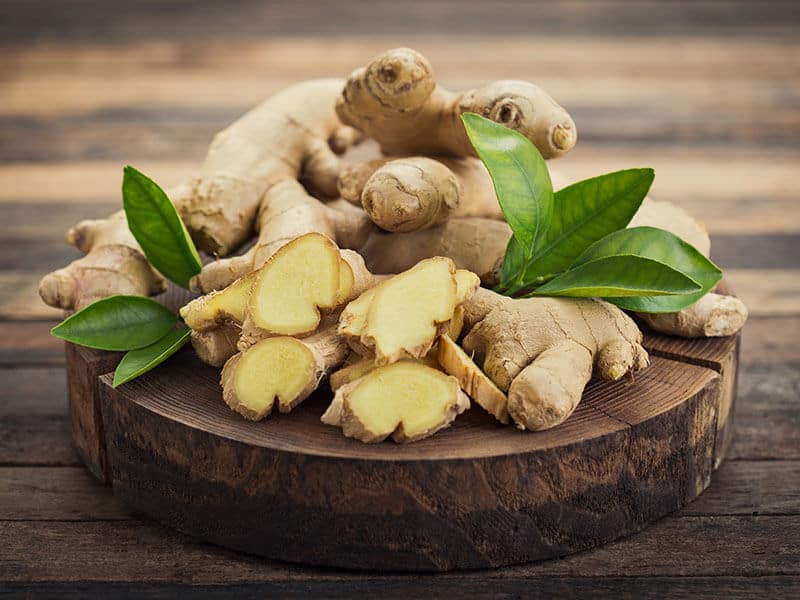
What does ginger taste like? As you may know, ginger is very commonly used in cooking and medicine. But why is it so versatile and essential to human beings? It is because of its taste and the wonderful benefits it brings to you.
I have been using ginger for so many years. As such, I want to share with you everything about its taste, benefits, and uses so that it will help you as much as it does to me. Let’s get started!
A Quick But Complete Overview Of Ginger
First of all, let me introduce ginger a little bit, so you get the essential knowledge about the origin, appearance, benefits, and application of ginger.
Origin
Ginger is known to be explored in Southeast Asia around 500 BC. It is one of the most ancient roots to be found. Nowadays, it is planted in other parts of the world, such as European and African countries. India produces the largest amount of ginger in the world. (1)
Characteristics
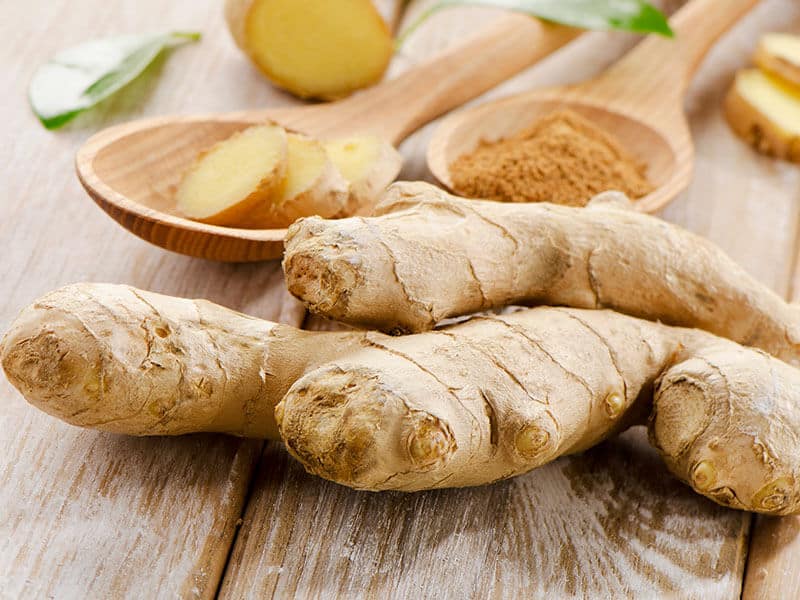
Ginger has yellowish-brown skin and light yellow flesh. Its skin is quite rough but very thin. You can use your fingernail to peel it. As you peel the skin, the fibrous and firm flesh appears.
This old-day root is one of the most versatile and popular ones. It is used to make drinks, savory dishes, and sweet dishes. Ginger is also used for medical purposes, such as treating nausea, vomiting, and upset stomach.
You can use it to add spiciness and warmth to soup, brew, and curries. It is also used to marinate meat and make salad dressing. Furthermore, cake, cookie, and bread recipes also call for ginger since it will give a kick to the flavor.
This easy instruction on peeling ginger will help you save a lot of time.
Health Benefits
This is my favorite section. I love to talk about how healthy and beneficial it is. From ancient times, ginger has been used to treat common illnesses like nausea, flu, and cold. It helps to promote digestion as well. (2)
The magical substance in ginger is gingerol, which is an antioxidant that can control blood pressure and reduce the risk of heart diseases in diabetic people.
In addition, recent research has shown that ginger may help to protect you against Alzheimer’s disease and some types of cancer.
Learn more about the great benefits of ginger here!
Ginger’s Taste Is More Impressive Than What You Think
I won’t let you wait any longer. In this section, I will share with you every detail about ginger’s taste, not only the ginger itself but also its varieties and its various forms.
What Is The Typical Taste Of Ginger?
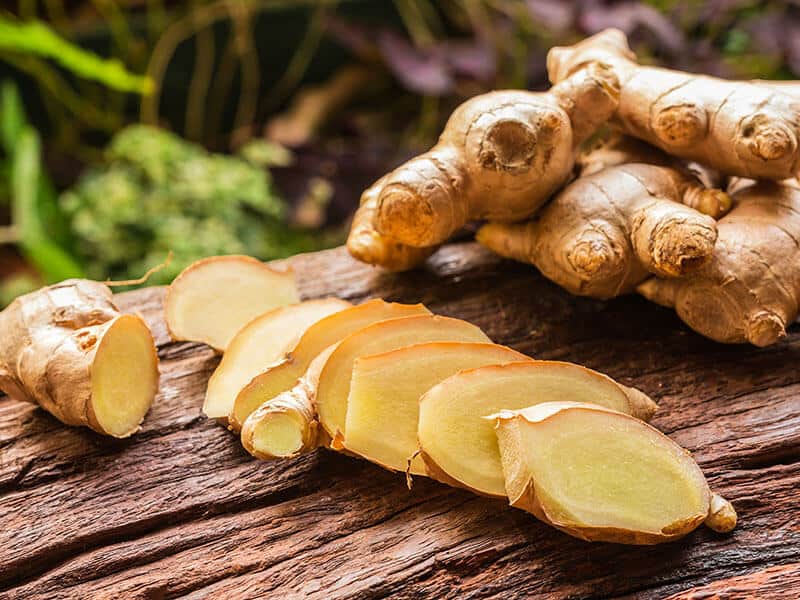
Ginger has a distinctive spicy, peppery flavor and a strong pungent, floral, and woody aroma.
Some varieties are described as citrusy. It has a distinctive warmth that will heat up your mouth and stomach once you eat or drink it. Some people feel a lemony hint in it. Once ginger is burned, it will become bitter.
You should note that ginger has a very overpowering taste. People often eat a small amount of it every time. Because of that, ginger is rarely used in its whole form. It is often grated, sliced, mined, and crushed.
Concerning texture, I want to stress that ginger has a very firm and sharp texture. It is as firm as garlic but much sharper. After being cooked, ginger becomes softer and more tender.
What Do Other Forms Of Ginger Taste Like?
The information I provide above is the taste of fresh ginger. But in practice, ginger comes in various forms. Each form has some differences in flavor and texture. Here are 7 of them.
Powdered Ginger (Ground Ginger)
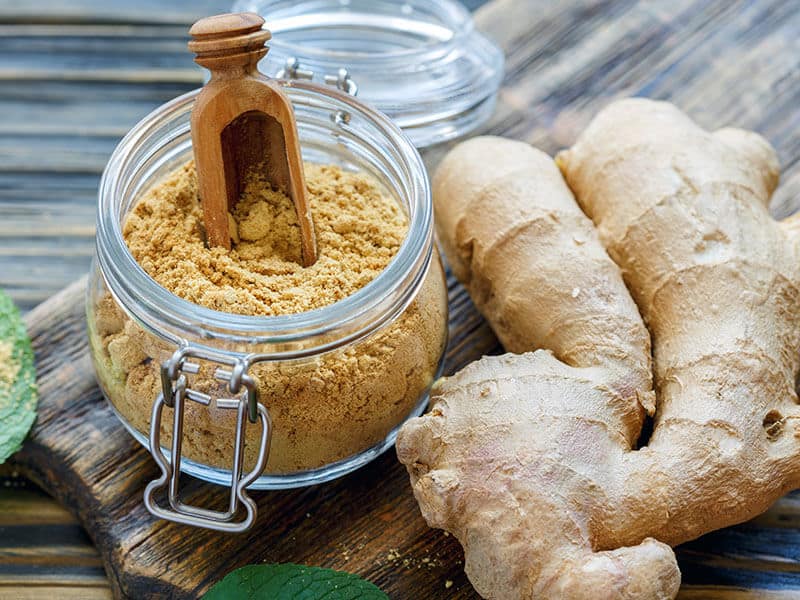
Ginger is often ground into powder for culinary and medical purposes. It has a dry and smooth texture. The taste is basically similar to fresh ginger, which is pungent and peppery. In addition, it also has some sweet and citrusy notes.
Candied Ginger (Crystallized Ginger)
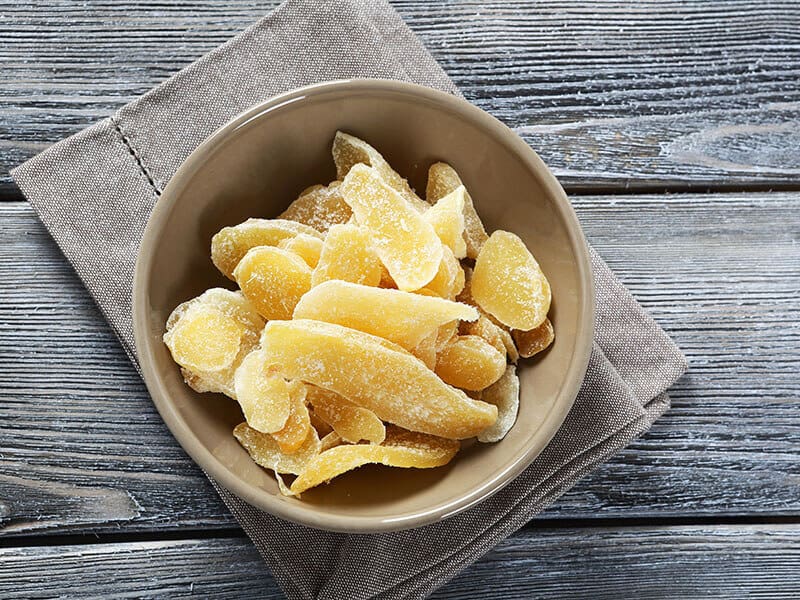
Candied ginger is made by slicing ginger, boiling, and coating the slices with sugar. So they are soft, sweet on the outside, and moist, chewy, peppery, and spicy on the inside. Candied ginger is often served as a snack or added to savory dishes.
It is also known for its ability to cure hot flashes, which is loved by women.
Preserved Ginger (Stem Ginger)
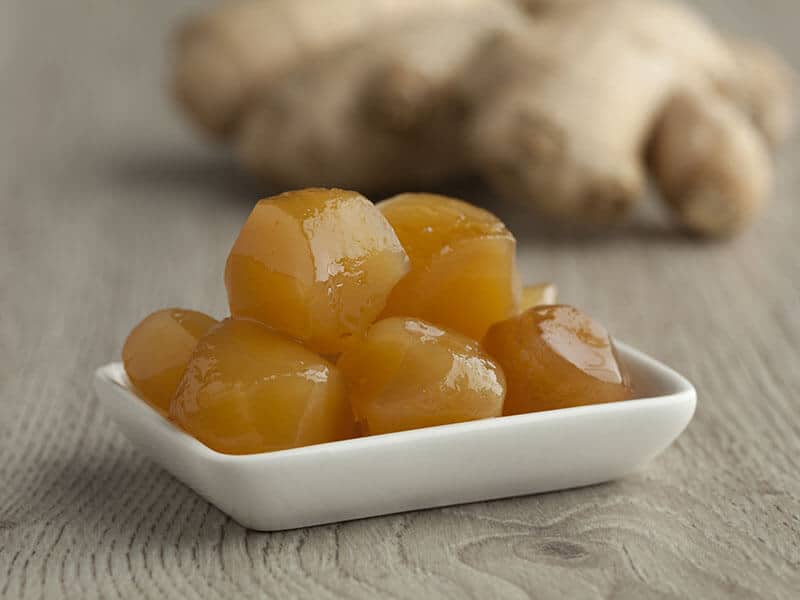
Preserved ginger comes in the form of peeled, cubed, and cooked ginger simmered in sugar syrup. Its sweet and spicy flavor is suitable to add to various sweet and savory dishes. It is often packed in a jar and sold in the supermarket. But there are homemade versions, too.
Pickled Ginger (Gari)
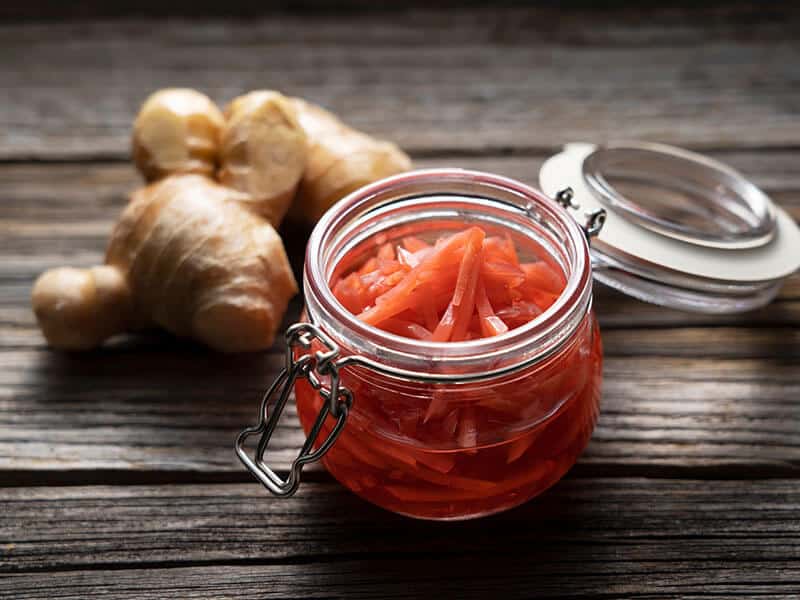
This is the traditional Japanese way to cook with ginger. Young ginger is used instead of the mature ones. It has a light pink hue and is often combined with sugar, vinegar, and salt, making the pickled ginger taste spicy, acidic, and sweet.
This dish is commonly served with sushi and sashimi.
Ginger Paste
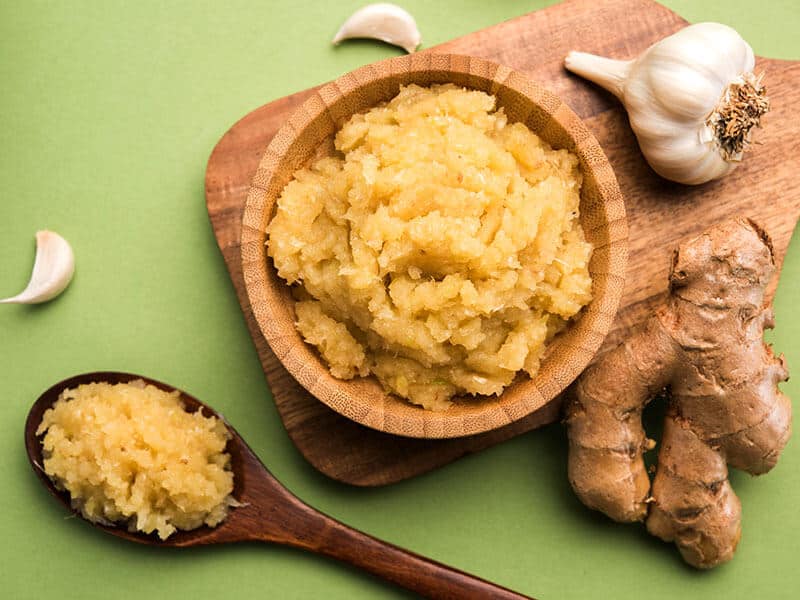
The ginger paste contains fresh ginger, oil, and water. It is creamy, spicy, and peppery. The flavor is not so different from that of fresh ginger. It is used to make many recipes such as curry, soups, cocktails, and sweet desserts.
Ginger Shot (Ginger Juice)

Your recipe may call for the ginger shot. It is the liquid form of ginger made from fresh ginger. Sometimes it also contains honey and lemon juice. Ginger shot has a strong spicy, warm, and tangy flavor, so it is used in small amounts. You will also find it a bit sweet and minty.
Ginger Beer
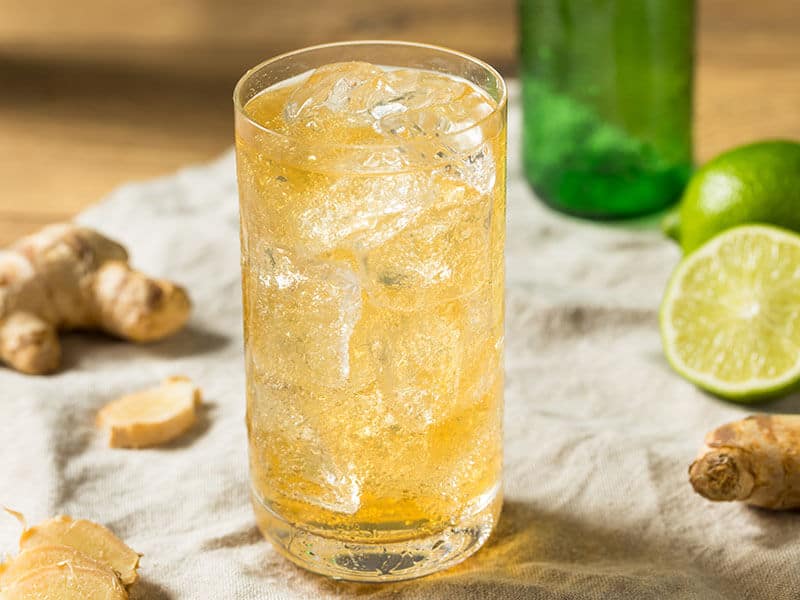
You can easily find ginger beer in canned or bottled form in the supermarket. Don’t get tricked by its name. Ginger beer is actually non-alcoholic. It is made by fermenting ginger, sugar, and water. The taste is spicy and citrusy.
Varieties Of Ginger
The ginger family consists of various varieties. Some of them have edible roots and are used in cooking. Some have beautiful flowers and are used as houseplants. I will introduce you to 9 edible varieties that are most frequently seen.
Each variety has some distinctive characteristics that can be easily identified. Let’s look at the table below to see how many types of ginger are there.
Yellow Ginger
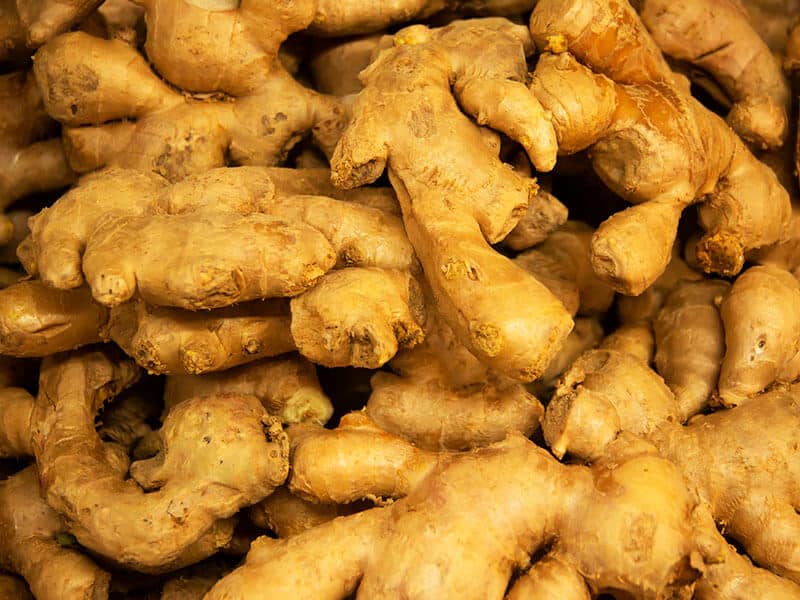
Yellow ginger is frequently seen in Northern Vietnam, Hawaii, and the Himalayas. It has the signature spicy and peppery taste of ginger, but it has a bitter note. It is used in culinary and for medical purposes.
Culinary Ginger
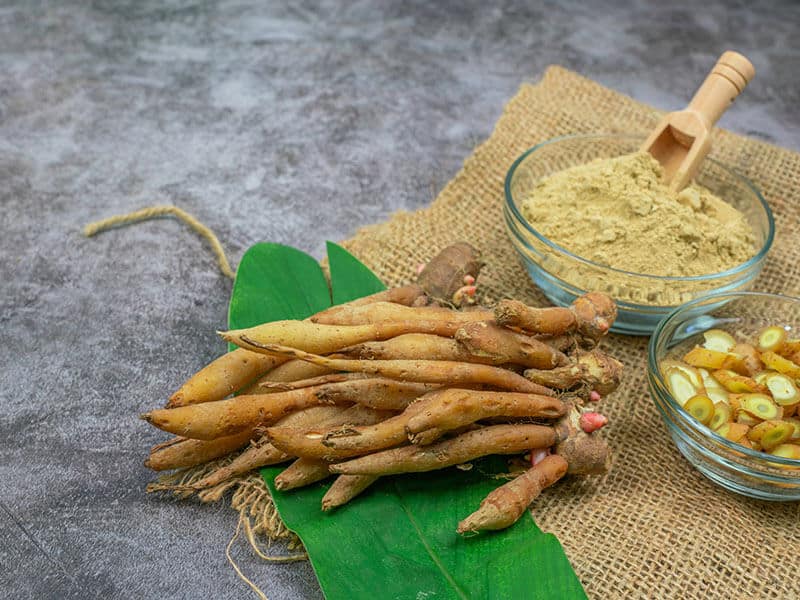
This is the most commonly used variety of ginger. It is also called Chinese ginger or common ginger. It has the typical spicy, peppery flavor and aroma. Its texture is firm and sharp. This variety is most frequently used in making sweet and savory dishes.
Shampoo Ginger
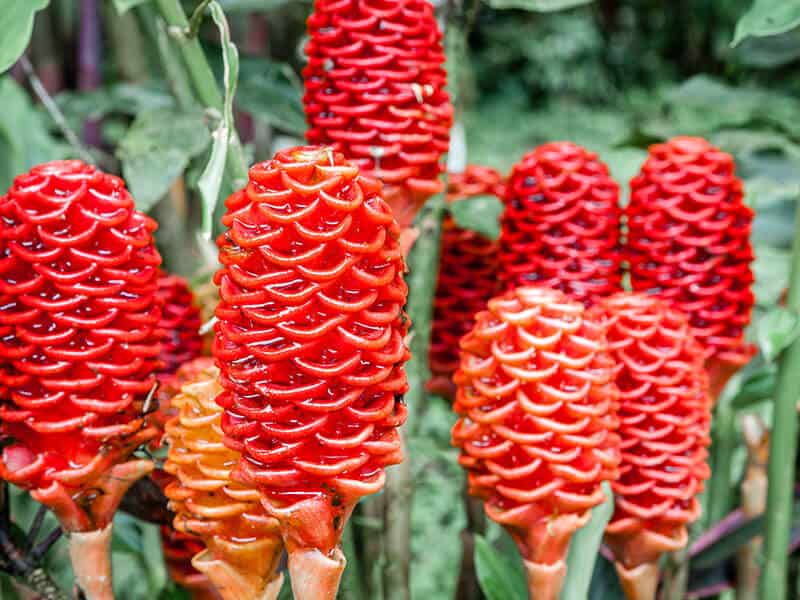
This variety has a strange name, doesn’t it? This is because it is often used to make shampoo. But this does not mean that it is inedible. You can use it. But it tastes a bit bitter and does not have as much flavor as common ginger.
Spring Ginger
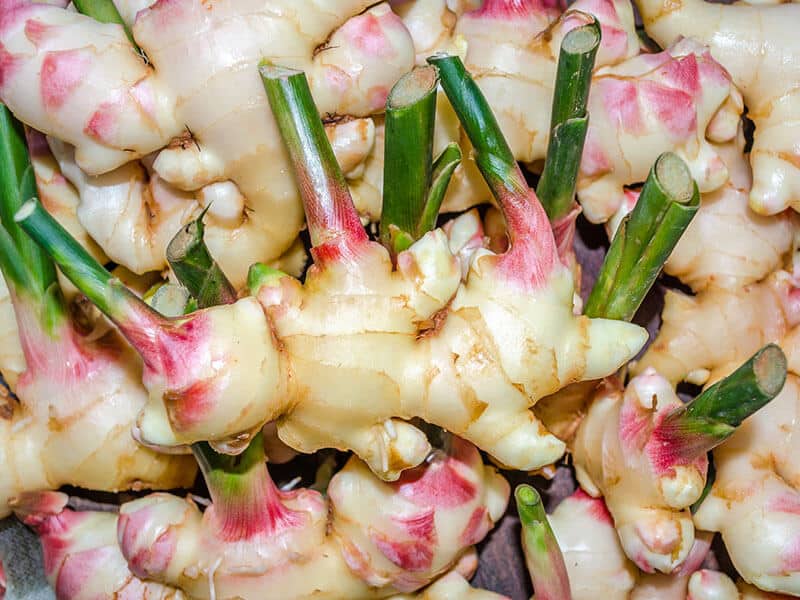
People not only use matured ginger but also use young ginger in cooking. You can identify it by the white and pink skin. It is also smaller and softer than matured ginger. It is more often referred to as spring ginger.
Its mild aroma and flavor make it an ideal choice for dishes that need a medium amount of heat.
Blue Hawaiian Ginger
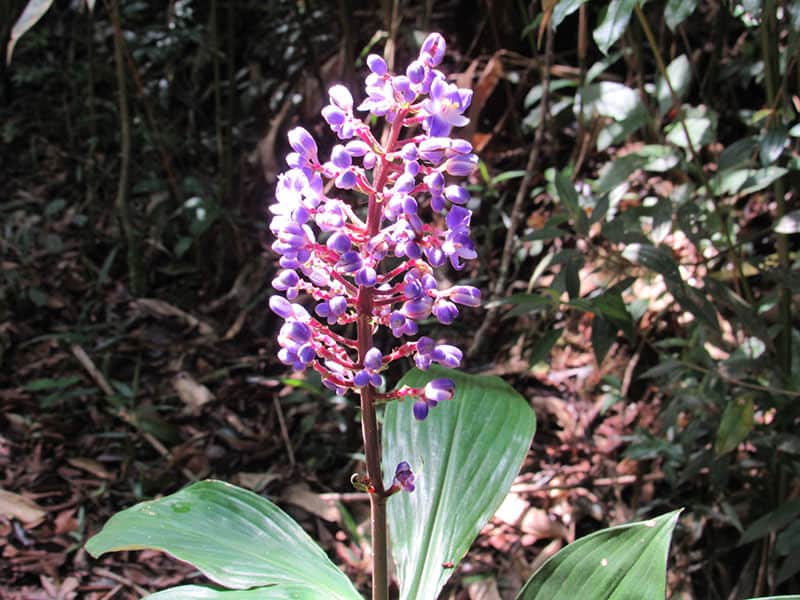
If you cut the ginger and see that it is a bluish color, don’t worry that it is spoiled. Actually, it is just a variety of ginger coming from Hawaii. It is safe to use in cooking and has a sharp and citrusy flavor.
Red Ginger
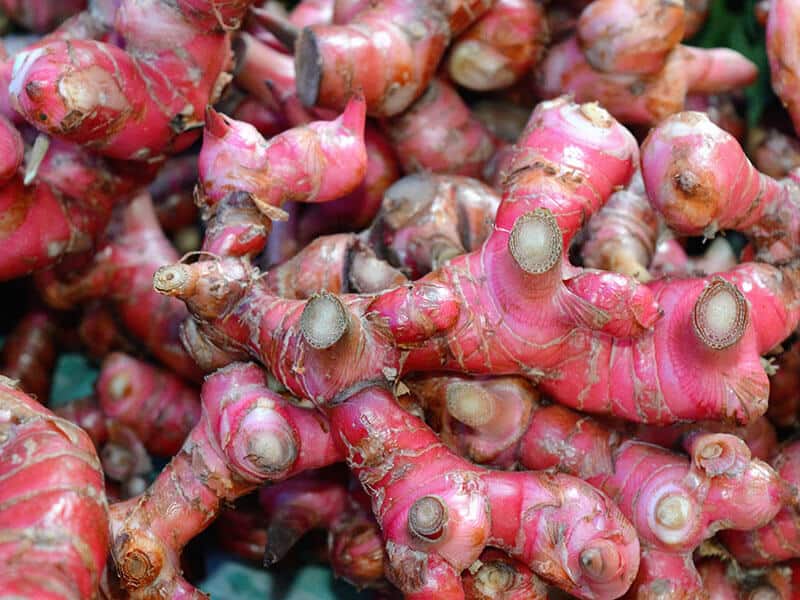
Apart from blue ginger, there is also red ginger. It has pinkish-red skin and flesh. This variety is not common, yet it is edible and very nutritious. It tastes very spicy, similar to ordinary ginger. The aroma is also very pungent. You can use it to cook savory dishes.
How Long Does Ginger Last?
After buying ginger, you will wonder about how long you can keep it. Here is the detailed guide for you. Different forms of ginger have different shelf lives. I have provided you with every single one of them in the table below. Check it out!
In general, ginger can be kept in any storage environment, namely the pantry, the fridge, and the freezer. Fresh ginger and ginger shots can be stored in any environment, while other forms of ginger must be kept in a certain place. Unpeeled ginger lasts longer than peeled ginger.
Powder ginger and candied ginger must be stored at room temperature. They have a long shelf life of 2-3 years.
Pickled ginger and ginger paste are better kept in the fridge for a couple of weeks. Ginger paste can also be frozen for approximately 1 year.
Ginger juice will not last more than 24 hours at room temperature. But you can expand its shelf life to at most 6 months by storing it in the fridge and the freezer.
You can keep unopened ginger beer at room temperature for 9 months, depending on the expiration date. Once opened, you should refrigerate it and consume it within 3-4 days.
How To Store Ginger Properly?
Knowing about the shelf life of ginger is not enough. I will show you a comprehensive guide to storing ginger so that you can keep it as long as possible.
At Room Temperature
Some forms of ginger can be stored directly at room temperature, such as fresh unpeeled ginger, powdered, and candied ginger. You should place them somewhere dark and cool. And remember to keep the lid on all the time in the case of powdered ginger and candied ginger.
In The Fridge
Storing ginger in the fridge helps to keep it longer. For all types of ginger, you should put it in an air-tight container or a freezer bag and refrigerate it. Fresh ginger should be placed in the crisper drawer.
You can also put it in a paper bag or wrap it in a paper towel. But these methods may shorten its shelf life.
In The Freezer
You can also freeze ginger. You can choose to peel it or leave it unpeeled because frozen ginger is very easy to peel. Put it in a freezer bag, vacuum sealer, or air-tight container before freezing.
Besides fresh ginger, ginger shot, and ginger paste can also be frozen. You just have to keep them in air-tight containers.
In A Pot
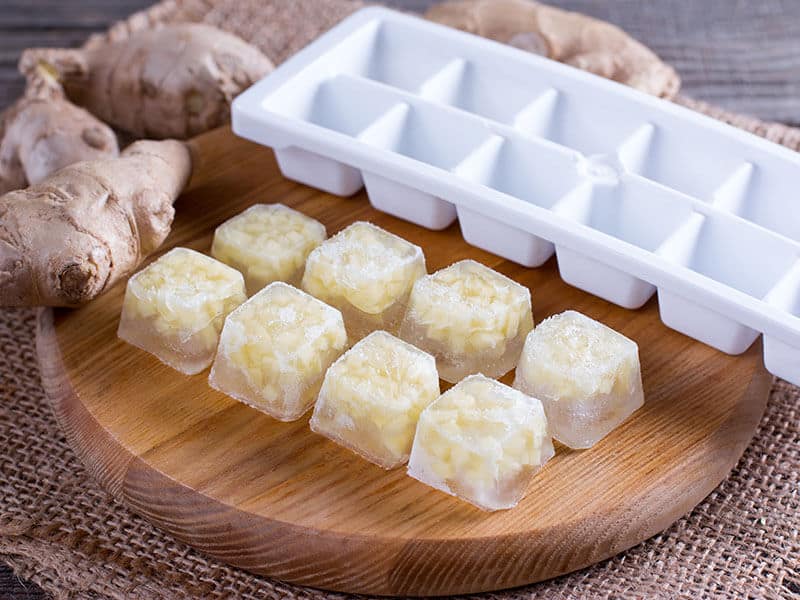
Do you know that you can plant ginger to store it? I know it sounds unusual. But it is the best way to make ginger always available in your kitchen. All you need to do is to plant the ginger root in a pot and place it in an area where it can interact with the sunlight and water it often.
You can break off parts of the root when you need it. It will not harm the rest. I highly recommend this method if you have time to spare for ginger.
What Does Spoiled Ginger Look Like?
If you’ve stored ginger for a long amount of time and are not sure about its quality, this guide will help you to identify whether it is still edible.
Appearance
The yellow color of ginger is an indication of its freshness. If the skin is a bit wrinkled, don’t panic, it can still be edible given that the flesh is still in good quality and its color remains the same. However, once it looks off and discolored, you should toss it right away.
Smell
Ginger has a fresh and strong peppery smell. Once that smell isn’t there, the ginger is probably rotten. Place the ginger close to your nose to check its aroma. For other forms of ginger, when they develop a sour or unpleasant odor, discard it.
Texture
Fresh ginger should have firm skin and flesh. Spoiled ginger is often soft and mushy. Whenever you are not sure, it is better not to use it.
Mold
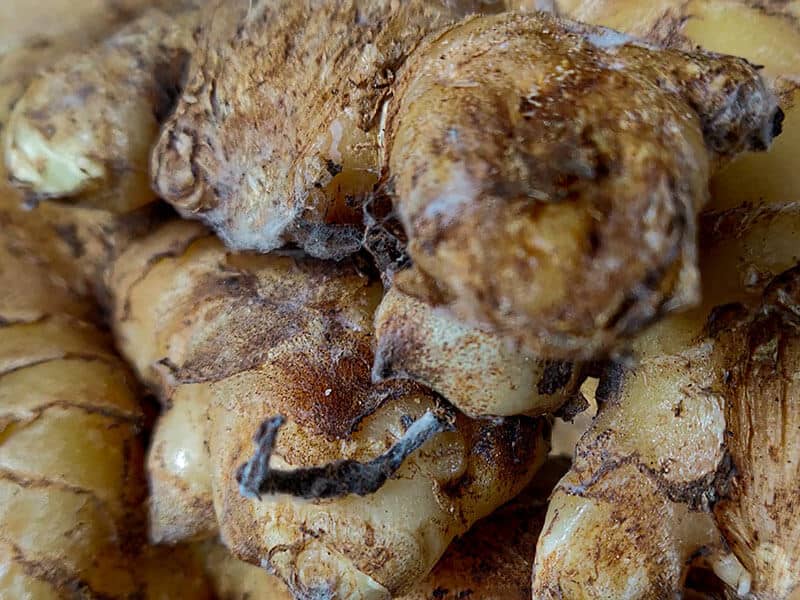
When you see mold on your ginger, throw it away immediately. It is the most serious spoilage sign. You may develop foodborne illnesses if you eat it.
Ginger, Turmeric, And Galangal: What Are The Differences?
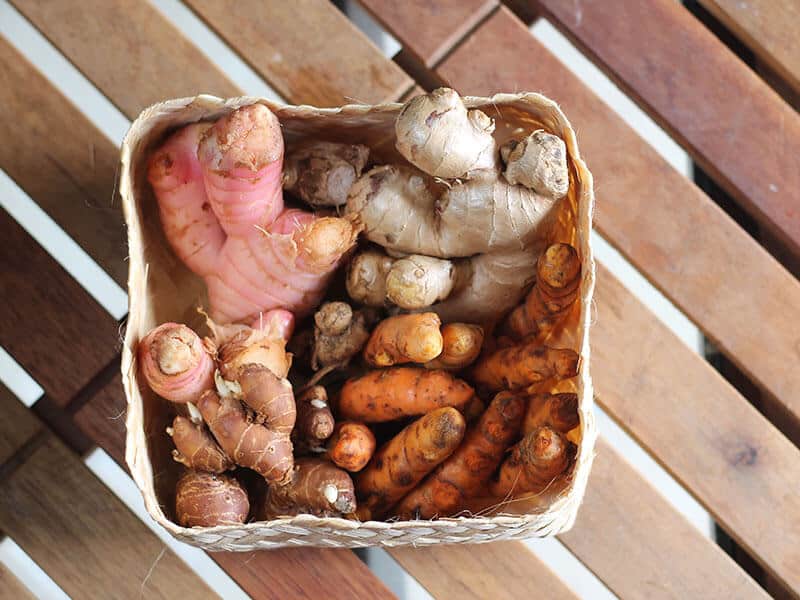
You will also absolutely come across turmeric and galangal at the Asian section in the supermarket. These three have quite similar appearances. All of them are roots and are often used in cooking. Yet they actually taste different, and their uses are not exactly the same.
Ginger, turmeric, and galangal all belong to the Zingiberaceae family, also called the ginger family. Both ginger and galangal have yellow skin and light yellow flesh. Turmeric has dark brown skin and orange flesh.
Compared to turmeric and galangal, ginger is much spicier and more aromatic. Galangal has a citrusy flavor. And turmeric is quite bitter.
In cooking, galangal and turmeric are not commonly used as ginger. Turmeric mainly adds more color to the dishes, while galangal rarely appears in any recipe.
5 Tasty Ginger Recipes You Must Add To Your Cookbook
Ginger is used to make a wide range of drinks, sweet and savory dishes. You can hardly find another root that is more versatile than it. Here are 5 best and easiest recipes for you to try today.
1. Ginger Tea
Whenever you have an upset stomach, make a cup of ginger tea. It will make you feel comfortable right away. Its warmth, peppery taste, and aroma are amazing. I love to drink it on a cold winter night.
You need only 10 minutes to make this delicious, healthy, and relaxing drink. So why not make a cup to enjoy tonight?
This easy and quick-to-make ginger tea recipe is everything you need.
2. Ginger Ale
Ginger ale is sweet, peppery, and very refreshing. While ginger tea is mostly served warm, ginger ale can be enjoyed with and without ice.
Although this ginger ale recipe sounds like beer, it is actually non-alcoholic. It is made only with ginger, water, and sugar. A glass of ginger ale right after lunch will be beneficial for your digestion.
3. Gingerbread
Gingerbread is so familiar to you. It is a must-have dessert in winter. This soft, fluffy, warm, spicy, and sweet gingerbread will be the star of your Christmas party.
Serve it with some whipping cream on top. You will feel pretty much in heaven. I can’t describe how much I love it.
4. Garlic Ginger Chicken
Let’s say goodbye to drinks and sweet desserts and come to a mouth-watering savory dish that is made with ginger. That is garlic ginger chicken.
I suggest you make this dish for winter dinners. The amount of heat in ginger and garlic will warm you up. The tenderness of the chicken balances out the flavor.
This delicious garlic ginger chicken recipe will not disappoint you.
5. Ginger Hummus
What is better than some peppery, warm, and spicy hummus to add spiciness to every bite? Once you taste ginger turmeric hummus, it will be your next go-to dipping sauce.
This delicious hummus is made by just blending everything in the food processor. So quick and easy!
FAQs
There are many things that people ask about ginger. I’ve gathered the most common questions and answered them below. They will be important, so read on!
Now, Do You Love Ginger?
I want to emphasize again the versatility and great benefits that ginger brings to us. It is an essential ingredient that every kitchen must have.
If you catch a cold, drink ginger tea. Whenever you need a refreshing drink, buy ginger beer. Once the recipe calls for grated or sliced ginger, you always have it in hand. Its spicy and peppery flavor and aroma are magical in sweet and savory dishes.
How do you often use ginger? I love to hear about how much you love this miracle root. Share with me in the comment box!
References
- En.wikipedia.org.. Ginger – Wikipedia.
- Healthline.. 11 Scientifically Proven Health Benefits of Ginger.

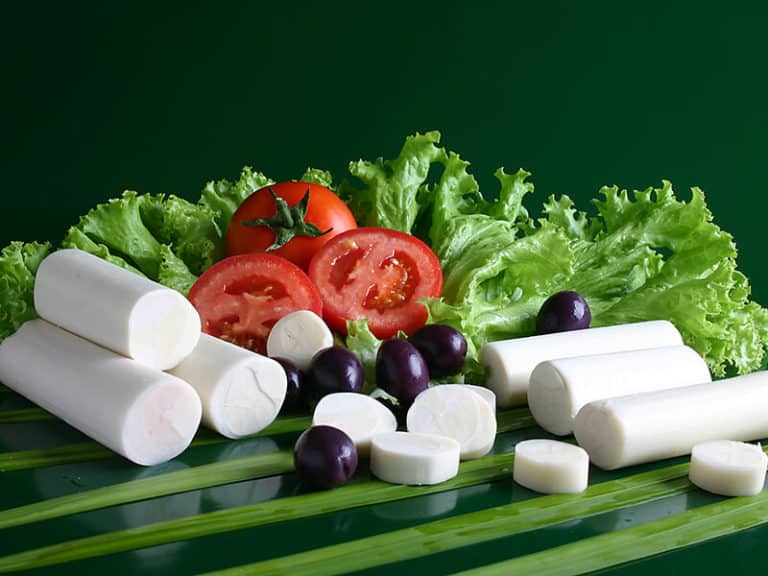
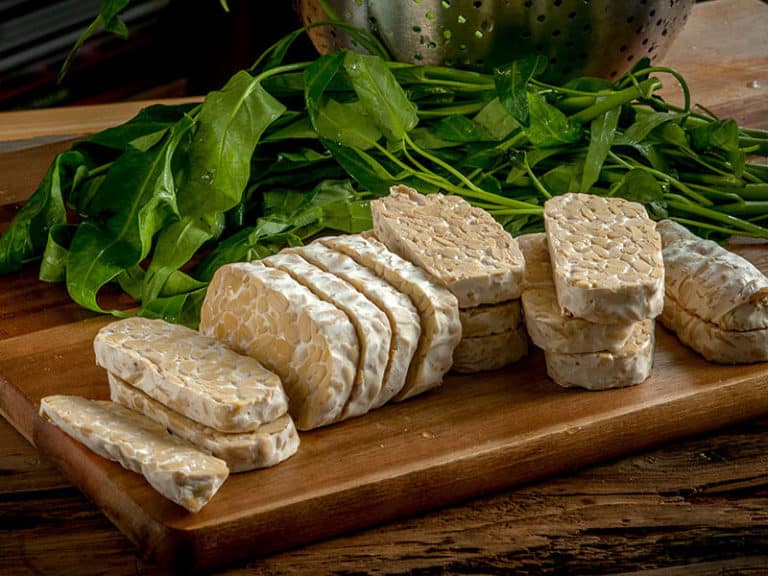
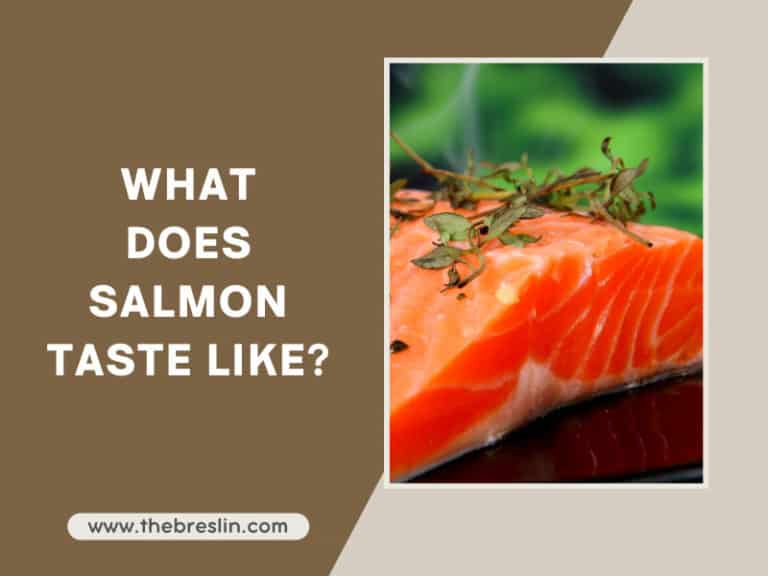
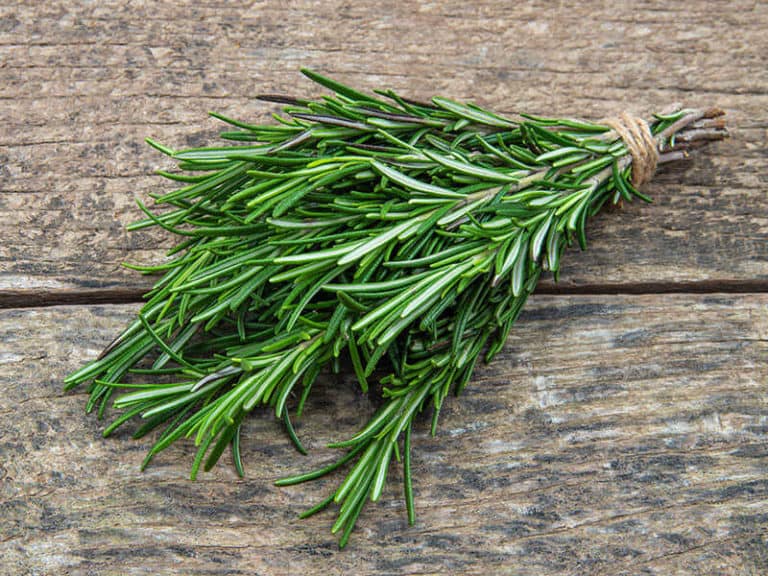
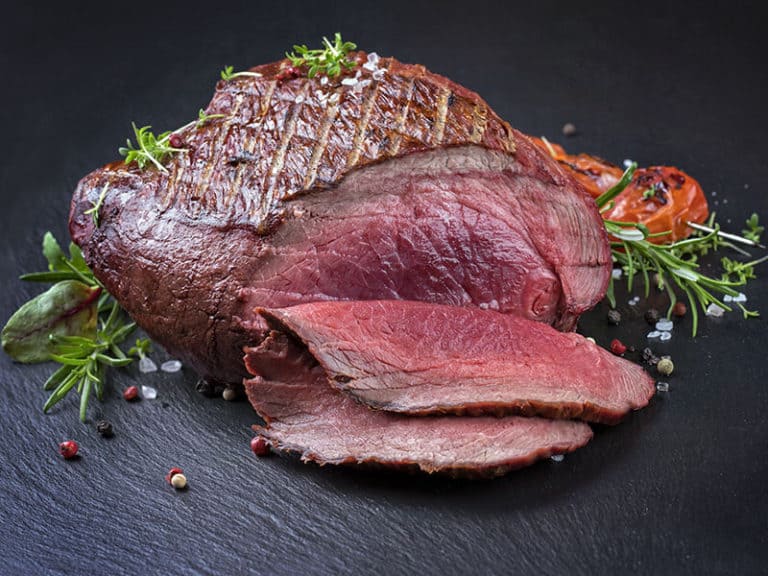
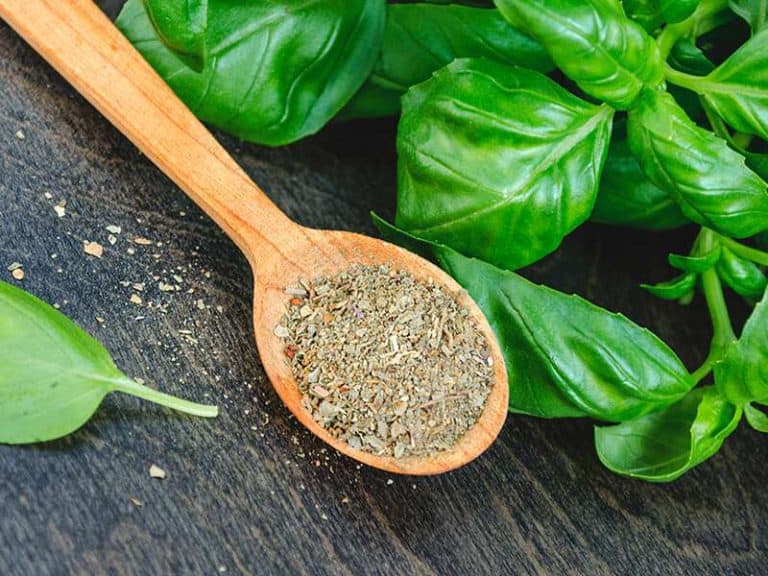
Amanda Collins
Founder and Senior Culinary Editor
Expertise
Culinary Arts and Management, Food Journalism and Critique, Recipe Development and Testing, Global Culinary Traditions, Sustainable Food Practices
Education
Institute of Culinary Education (ICE), New York, NY
Program: Diploma in Culinary Arts
Focus: Intensive hands-on training in culinary techniques, recipe development, and kitchen management, preparing students for professional roles in the culinary industry.
Monroe College, New Rochelle, NY
Program: Associate in Applied Science in Culinary Arts
Focus: Practical culinary skills, including cooking techniques, menu planning, and kitchen operations, with an emphasis on hands-on experience and industry standards.
Amanda Collins is a seasoned chef and food editor with a deep love for global flavors. Trained at the Institute of Culinary Education and Monroe College, and with over 15 years in the culinary field, Amanda has refined her skills in kitchens worldwide. Her background in food studies gives her a unique ability to share both recipes and the cultural stories that shape them.
As senior culinary editor at thebreslin.com, Amanda’s work brings authentic dishes to life, inviting readers to explore new flavors and techniques from around the globe. Her approachable style makes it easy for anyone to bring a bit of the world’s cuisine into their kitchen.